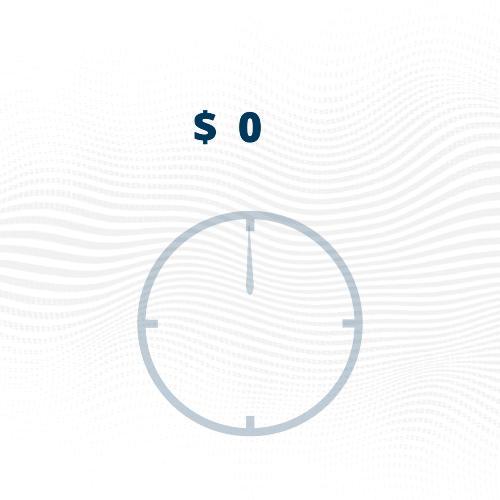Technology is advancing faster than ever before, and cyberattacks are evolving at a similar breakneck speed. With insidious new techniques, increasingly convenient ways to launch attacks, and a widening attack surface (the number of possible entry points where unauthorized access can occur), DDoS attacks are quickly becoming one of the most significant threats to online security.
A Distributed Denial of Service (DDoS) attack overwhelms a network or website with massive amounts of illegitimate traffic, crashing systems and disrupting operations. For IT leaders, this means DDoS protection is more critical than ever.
As these cyberattacks become faster, more frequent, and more costly, it’s essential to understand the full scope of the threat. We’ll break down the key findings from our latest DDoS report, identify the forces driving them, and offer insights on how DDoS protection can fortify your IT infrastructure.
Knowledge is Power: A Peek Inside the Report
The numbers are in: DDoS attacks are surging, with a greater spread across industries and increasing size and frequency.
Our latest DDoS Insights Report answers key questions to help you prepare, including:

- What’s driving these attacks?
- Which industries are being hit the hardest?
- Where are the largest attacks happening compared to where most attacks occur?
- How are cybercriminals timing attacks for maximum disruption?
- What is the true cost of a DDoS attack, and how can businesses implement more effective DDoS protection – among other network security solutions?
In the past year alone, DDoS attacks nearly doubled, surging 81.7% from 90,000 attacks in 2023 to nearly 165,000 in 2024. And cybercriminals are getting smarter, using AI and larger botnets to cause maximum damage.
What’s behind this alarming trend? And more importantly, how can businesses protect themselves?To uncover the industries under fire, the tactics cybercriminals are using, and what it all means for your security strategy, we’ve pulled key insights from Zayo’s latest DDoS Insights Report.
Key Takeaways
Need a quick summary? Here are some of the biggest takeaways:
- DDoS attack frequency jumped 81.7% in just one year.
- Attack volume peaked in October and November 2024, timed around the U.S. presidential election.
- Overall, DDoS attacks in 2024 were shorter but larger. 86.78% of attacks lasted less than 10 minutes, yet the overall traffic volume reached 793.4 TB.
- Many attacks are intentionally short to probe and test an organization’s defense, better preparing cyberattackers to launch more dangerous, impactful attacks.
What’s Driving the Attacks?
Driven by artificial intelligence (AI), larger botnets, and more vulnerable IoT devices, DDoS attacks are becoming more powerful, more frequent, and harder to stop.
Artificial Intelligence is Supercharging Attacks

AI is an accelerator for DDoS attacks. While it’s transforming cyber defense, attackers are using it to scale and refine their attacks faster than ever.
- AI-powered botnets can adapt in real time, rendering some DDoS protection solutions less effective.
- Automated attack tools allow cybercriminals to launch large-scale, complex attacks with minimal effort.
- Evasion tactics use machine learning to bypass traditional defenses, requiring advanced DDoS protection solutions.
Bigger Botnets, Greater Damage
Yes, AI-powered botnets are making attacks more sophisticated, but they’re only part of the problem. Other major factors are accelerating botnet growth and making DDoS attacks more devastating than ever.
- More devices, more vulnerabilities: As the number of connected Internet of Things (IoT) and other devices explodes, so does the pool of potential botnet recruits. Everything from phones, tablets, computers, and home security cameras to industrial control systems can be used to gain entry.
- Faster, more powerful attacks: Attackers are moving away from slow, drawn-out assaults. Instead, they’re hitting hard and fast, making it difficult for security teams to respond in time.
- New weaknesses: Cybercriminals are constantly finding and exploiting weaknesses in cloud services, APIs, and network protocols to build stronger botnets.
More Industries Are Under Fire
Telecommunications is still the most heavily targeted sector, accounting for 42% of all attacks observed in 2024, although this is down from 48% in 2023. While the industry remains a prime target, cybercriminals are diversifying by shifting their focus to a broader range of industries.
Here’s how the landscape is evolving:
- Finance: Attack volume surged 240%, from 3,189 in 2023 to 10,847 in 2024. This industry also saw attacks jump to over double the average size from the first half of the year to the second half.
- Cloud & SaaS: The number of attacks on cloud providers grew 11% year-over-year, with this industry also experiencing some of the largest attack sizes, accounting for half of all attacks by volume recorded in Q3 2024.
- Manufacturing: Attack sizes in this sector skyrocketed by 257% as hackers sought to cause detrimental downtime.
Attackers Are Getting Smarter
Cybercriminals are getting better at timing their attacks, ensuring businesses feel the greatest possible disruption.
- Most attacks happen during business hours because that’s when downtime hurts the most.
- Election season saw a major spike in attack volume, highlighting how cybercriminals leverage political events.
- Shorter, more intense attacks overwhelm defenses before security teams can respond.
How to Protect Your Business

DDoS attacks aren’t just a nuisance. They’re a costly risk that can cripple operations in an instant. On average, a DDoS attack in 2024 costs $6,000 per minute. With attacks lasting 39 minutes on average, that’s a staggering $234,000 lost per incident. And that’s just the direct cost. Factor in reputational damage, lost customers, and recovery expenses, and the financial impact could become much greater.
That’s why businesses across every industry are arming themselves with comprehensive cyber defense strategies using real-time DDoS protection solutions to thwart costly, damaging attacks.
What’s Your Cybersecurity Strategy?
To learn more about the latest evolution of cyber threats and proactive ways you can guard against them, download our full DDoS Insights Report. You’ll get a detailed look at this year’s attack trends and expert insights on protecting your business in 2025 and beyond.
